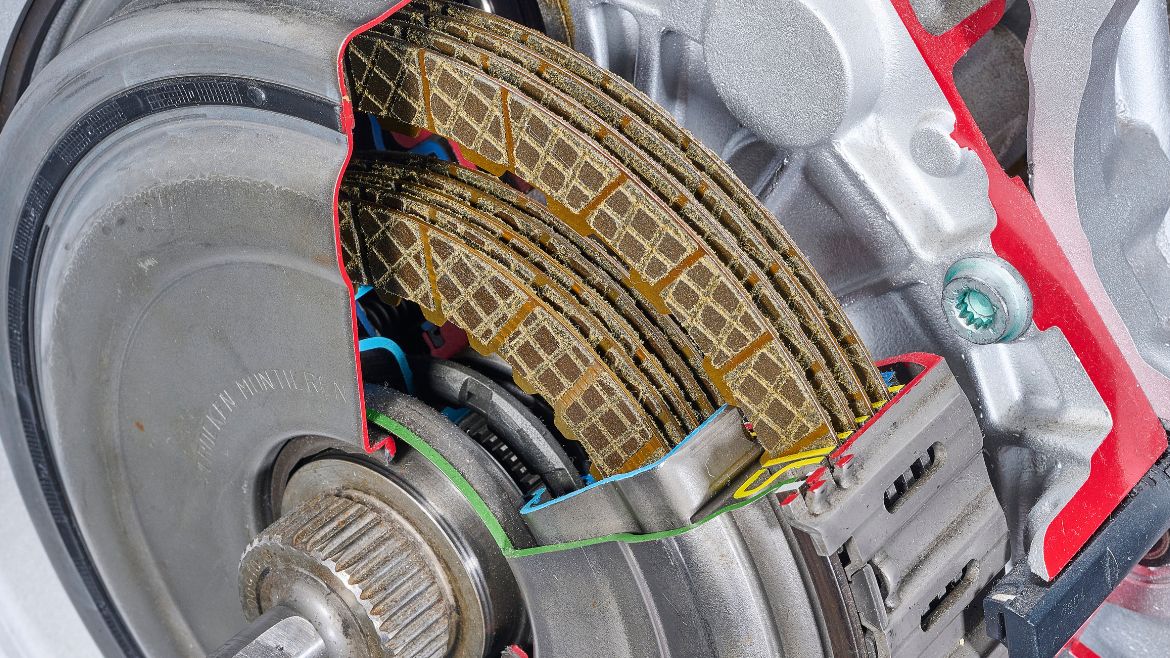For passenger cars, an essential part of the drivetrain is the transmission. Not all transmission designs are the same. Each design offers its relative strengths and weaknesses. But one thing that is critical is understanding how a transmission’s design translates into specific fluid requirements to ensure the transmission is protected effectively and operates efficiently.
Consider the dual-clutch transmission (DCT). This transmission design is found in a wide range of vehicles, from performance cars through to mainstream vehicle types including hybrids. DCTs deliver rapid gear changes and efficiency. This gives the consumer the perception of a smoother, more efficient drive. Choosing a fluid formulated to meet the exact needs of a DCT is key to keeping the transmission running properly over time.
How a DCT Operates
At the heart of the design of a DCT are two concentric shafts. One shaft is assembled inside the second hollow shaft, and both freely rotate. Each shaft also has its own clutch, with both clutches located in the same housing. One shaft is used to engage the odd-numbered gears, and the other drives the even-numbered gears.

The key to the efficient design of a DCT is the way in which gears change and are engaged. Because there are two shafts with two separate clutches, the transmission can engage the next gear change in advance while the current gears are still running. The clutches then switch, transferring power from one gear ratio to the next. A logic controller interprets the speed and power demand to anticipate the future gear change.
This ability to have two sets of gears with one set pre-engaged allows for a faster gear change. The result is a transmission that has no loss of drive between gear changes, providing a smooth, responsive driving experience and improved efficiency.
DCTs Compared to Other Transmissions
Although it is an oversimplification, you can think of a DCT as a merged design that incorporates elements of both manual transmissions (MTs) and automatic transmissions (ATs). Much like a manual transmission, the DCT relies on helical gear pairings to provide a set range of gear ratios and speed/torque combinations. At any given time, a single gear pairing is driving the vehicle.
However, much like an AT, the DCT requires the transmission fluid to act as a hydraulic fluid. In the DCT, synchronizers are activated to shift the gears. These synchronizers are enabled by the fluid. Also, the DCT includes other friction elements— similar to an AT but with two sets of clutches—that must engage effectively to transfer power.
The Needs of a DCT Transmission Fluid
DCTs need their own suitable lubricating fluids. The design of the DCT impacts the performance requirements of the lubricant. To an extent, a DCT fluid must deliver performance that you’d see in fluids for ATs and MTs, combining those requirements into a single fluid. The gear arrangement requires strong wear protection, which is true for manual transmission fluids as well. Both MTs and DCTs demand greater wear protection than an AT, where loads are spread across a greater number of gears.
But like an AT, the friction elements of the clutches in a DCT demand a fluid that optimizes friction – with sufficient protection to avoid wear while also avoiding any undue slippage between the clutch plates. Both ATs and DCTs require fluids that carefully optimize friction response to avoid noise, vibration and harsh operation.
Once you consider the range of fluid performance requirements such as gear wear protection, clutch performance, synchronizer operation, etc. you can see how the design of a DCT translates into a fluid that must be engineered to meet its specific needs. Many vehicle DCTs have particular drain intervals, when an oil change will be required. A DCT specific fluid should be used. If you were to use a transmission fluid for an AT in the DCT, the result would negatively impact gear wear and clutch performance, and ultimately could lower the lifespan of the transmission.
Contact your account manager to find out more about Lubrizol’s dedicated wet dual clutch transmission fluid, Lubrizol DCT22, for out-of-warranty service-fill vehicles.









